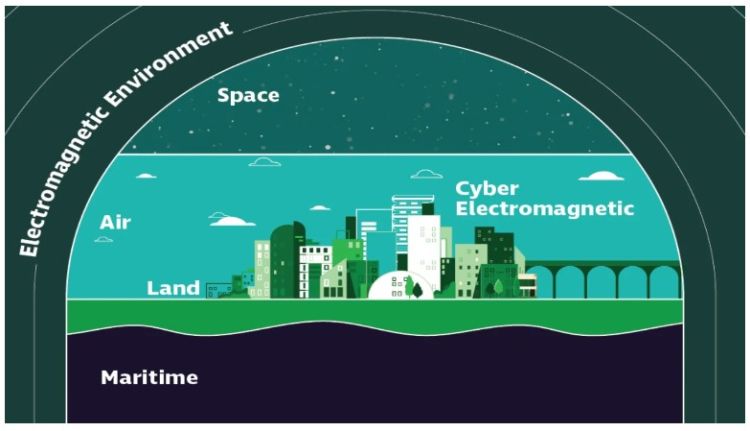New consortium awarded £7m to work on future science and technology for the electromagnetic environment

The Electromagnetic Environment (EME) Hub will focus on the coordination of wireless activities in different assets deployed for multi-domain missions on Earth and in space.
The EME Hub will be managed by a team of academics, led by Loughborough University, who will work together with local industry partners to drive innovation in electromagnetic activities.
The academic consortium includes the University of Leeds, Queen’s University Belfast, Queen Mary University of London and the University of Glasgow. They are supported by industry partners, including BAE Systems, Hensoldt UK, CENSIS, Leonardo, Kromek Group, MDBA Missile Systems, QinetiQ, and the National Physical Laboratory.
Training and development are central to the Hub’s agenda, which will focus on developing new talent and specialist skills, on re-skilling and on broadening academic input from other disciplines to establish the UK as world-leaders in generation-after-next electromagnetic science and technologies.
The DSTL-funded EME Hub is an exciting opportunity to focus national capability on developing generation-after-next science and technology for the Electromagnetic Environment.
Speaking about the new award, Dr Christopher Wood, Associate Professor in High-frequency and Mesoscopic Electronics said, “The DSTL-funded EME Hub is an exciting opportunity to focus national capability on developing generation-after-next science and technology for the Electromagnetic Environment. A central tenet of this activity is to nurture talent and create a skills pipeline, to raise awareness of the challenges we face and to extend academic activity in this area.
“The University of Leeds is delighted to be part of the EME Hub and will apply our state-of-the-art microfabrication capabilities in the Leeds Nanotechnology Cleanroom, alongside our world leading capability in Terahertz technologies, to meet these current and future challenges.”
The EME Hub represents a critical capability that will underpin technological developments to sustain future operations in contested electromagnetic environments. One of the main issues for DSTL is to manage the challenges of ‘maintaining freedom of manoeuvre’ in the electromagnetic spectrum.
Dr Wood explained, “The future of the electromagnetic environment is, in many ways, uncertain with perhaps the exception of one fundamental truth: electromagnetic congestion, and competition for resource, is only increasing. This simple fact is a strong motivator to develop capability in this field, whether for protecting systems against interference or targeted attack, for extracting signals from complex backgrounds in sensing and communications, or to develop offensive capabilities for military applications.”
DSTL aims to develop ‘generation-after-next capability’ that will support the wireless delivery of offensive and defensive effects.
Through the Hub, DSTL aims to develop ‘generation-after-next capability’ that will support the wireless delivery of offensive and defensive effects. However, such advances will inevitably impact significantly on commercial and civilian wireless technologies.
DSTL chief executive Dr Paul Hollinshead said: “It’s a privilege to announce this new investment during British Science Week. The EME Hub brings together the best minds working in the electromagnetic environment from industry and academia with the drive and leadership from government.”




